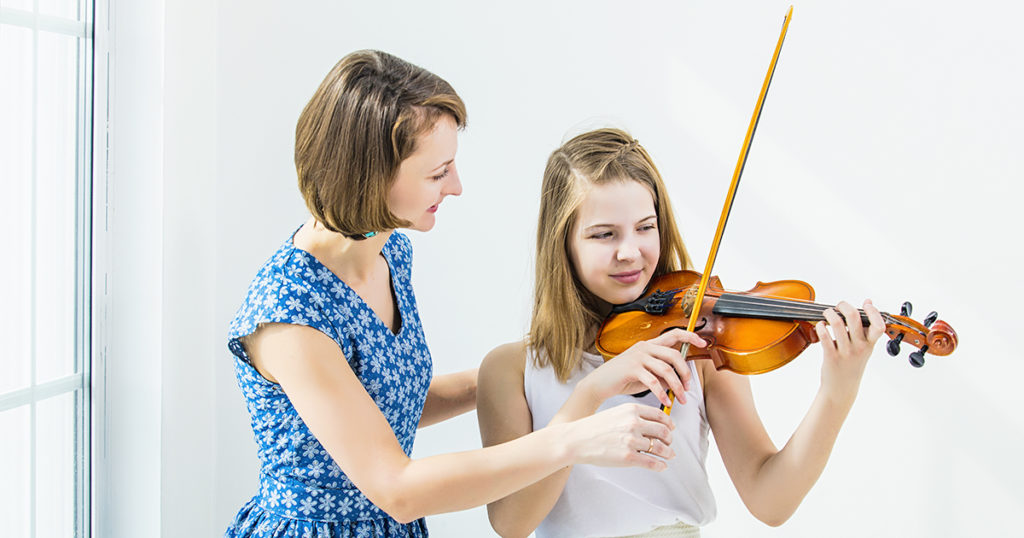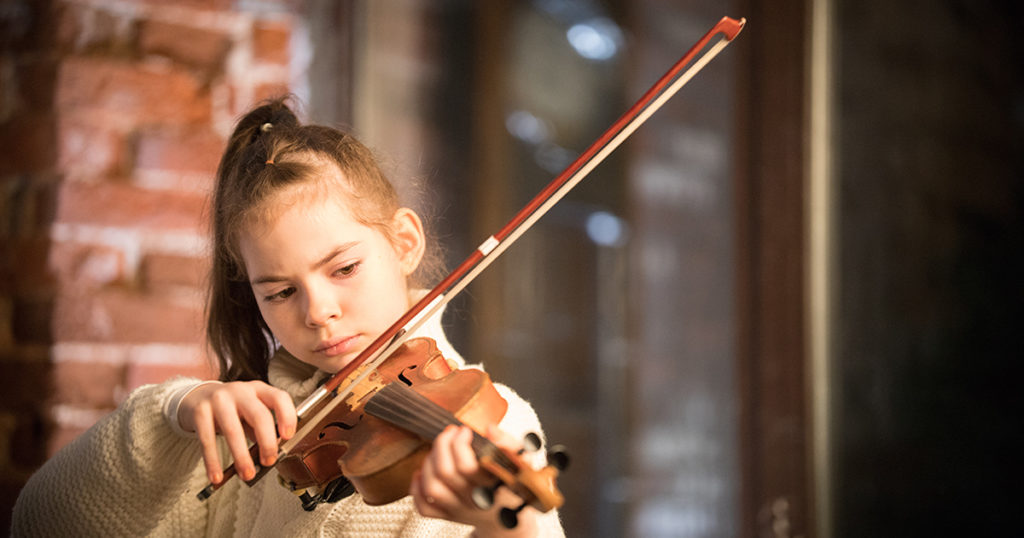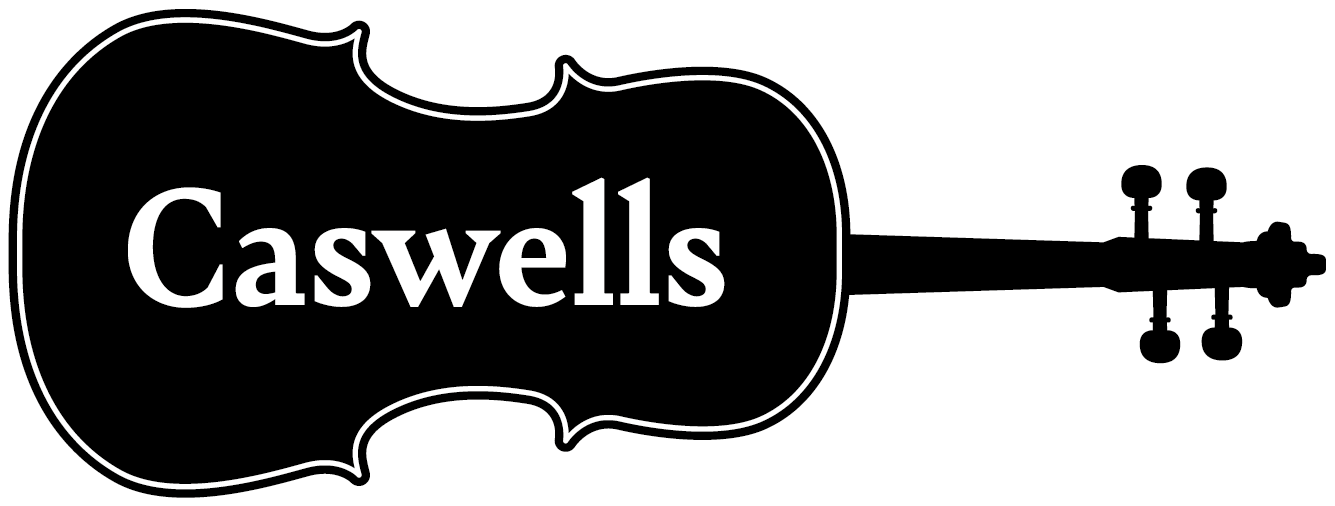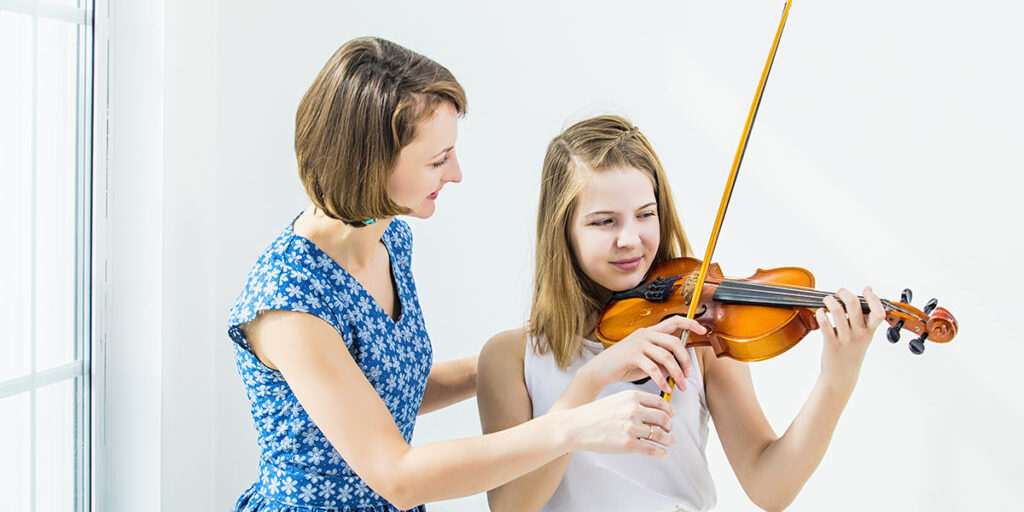5 Ways to Support Your Child When Learning Violin

So your child has expressed enthusiastic interest in learning to play the violin. Naturally, as a parent, you’re apprehensive but excited whenever your child sets their mind on a new project and adventure.
Now that your child has decided they would like to play the violin and you’ve said you’ll lend them the means to get their hands on an instrument, you may believe your involvement as the parent of a budding musician is completed. This is a misconception.
In fact, supporting your child throughout their development can be one of the most important ways of enabling their musical success. We do understand that knowing just what to do and when to do it can be daunting.
To help you, we’ve highlighted five of the key ways you can support your child on their musical journey.

1) Choose the right violin and accessories
Choosing the right violin and accessories for your child shouldn’t ever be an afterthought. Surely all violins are made the same, we’ve heard parents say – the simple answer is that is just not true.
Getting the best sizing for a violin correct is important for making sure your child has a comfortable grip, arm extension and motion. Sometimes it’s easy to think they’ll grow into it but an oversized violin can actually damage a child physically as well as musically. Posture, poise and physical comfort are very significant parts of being successful with a violin.
A violin that is too big impacts the curvature of the left arm, making it straighter, and the placement of the left fingers, making them unnaturally far apart. This completely throws off the mechanics of playing the instrument.
An oversized violin is also too heavy, and this can literally be a “pain in the neck” for your child. Holding up an unnecessarily heavy instrument can lead to muscle strain in the neck, shoulder and arm. The heavy violin pull can also cause a child to adopt a droopy position. This position can become exceptionally difficult to reverse.
Violin sizing isn’t difficult but it is important. If your child’s teacher or school is making them play an instrument that is the right size then you have every ability to make a change. Choosing to rent a violin can be a very cost-efficient and smart solution for a growing child as you can simply update on the instrument when the time is right.
However, even with rentals, it is important to know where to start. At Caswells, we offer an efficient and precise sizing assessment from our shop in Banbury. From there we can recommend the best size for your child and talk you through, with expert advice from our team, the best possible solution for your budget and ambitions.
We always want what’s best for any experienced or beginner musicians so we’ll also provide tips and recommendation on the best accessories and violin parts to further your child’s journey. We can resolve problems such as the previously mentioned muscle strain with fantastic shoulder rests such as those manufactured by KUN or WOLF.
Correct sizing and supportive accessories help improve your child’s comfort and capability, making them more inclined to stay positive when learning and not be deterred by completely unnecessary discomfort or handicapped by bad habits caused by positioning.

2) Encourage practice
Practice makes perfect. Practice allows the process to become more natural, comfortable and more self-assured. However, children will be children and sometimes the idea of practice is nothing but arduous.
There are several ways that parents can approach their child’s practise time but there are two, at the opposite ends of the spectrum, that can be more consequential.
Making demands and forcing your child to practice in a pushy or aggressive way can be especially damaging. This can cause mixed feelings in a child toward the instrument as they will associate it with something they are forced to do. Yes, you have poured money and time into this instrument for your child and they must play it but obligations do not make children compliant.
How can you prevent practise from feeling like an obligation? Firstly, never link ‘asking’ a child to practice with anger or annoyance. Your child isn’t trying to upset you by not practising. Think of the things that your child does enjoy and change instrument practise into a ‘fun’ activity. You can even provide rewards and goals so that your child can see that what they do gets good results and that they are achieving something.
At the other end of the spectrum, is not taking an interest in your child’s to practise at all. One of the misconceptions that often leads to this idea of distance is that just because your child spends all their ‘learning’ time with an instructor, you don’t need to support your children through the process.
Chances are that your child is proud of what they’re doing and want you to invest time and energy into listening and helping them improve. They might want to learn alongside their teacher but it’s you that they’ll want with them as the main support system to see them achieve goals and learn new things.
Make time to organise little recitals for your child so they can show you what they’re doing. If you show an interest then they’ll be eager to prove. Feeling connected to the process is imperative to continuing it for a long time and giving them the chance to develop.

3) Consider violin rental
As we mentioned above, renting a violin can be one of the most beneficial ways of starting a child off with an instrument. Violin rental takes away from the initial outright cost and allows you to let your child experience an instrument for a prolonged period of time to see if it suits them.
Children grow fast and we’ll go back to our previously made point about the importance of accurate sizing. If your child is growing out of their violin then it can stunt their ability.
If your predominant concern is still about cost then we estimate that on average your child will have to play for two or more years to make purchasing a more cost-effective option. Children’s interests can be fickle and one of the main issues with going straight in with purchasing as your child’s first experience of a violin is that their interest may wane before it even begins. By renting, this becomes a very minimal issue.
With Caswells, rental is straight forward, flexible and affordable. It allows your child to have an important period of adjustment and we offer a great incentive that can put the first eight months of rental fees toward purchasing the instrument.
While renting is not always the best option for experienced and older violin players, this can be the very best option for getting a violin for your child.

4) Choose the right violin teacher
Now that your child has really expressed a wish to play the violin and is confident they want to learn, it’s time to find someone that can help them progress with their musical journey. A violin teacher is a fantastic, practical way for a young child to learn from a qualified, experienced musician.
When you’re trying to find a teacher, it’s always good to find out a bit about them. Most teachers will have a short profile about their preferred styles, education and experience. Some may even have information about the success of the previous pupil’s and their current musical employment.
Choosing a teacher will ultimately be about your own instinct but someone with experience training a certain age group specific to your child can be a good option as they will understand the mindset and capability of that age group.
Also make sure to engage your child in the choice of choosing, after all this will be their teacher. It can give them added responsibility and allows them to form an initial bond to the person they help to choose.

5) Be present in violin lessons
Above we mentioned how important being present in your child’s musical journey is. Not only does this include supporting them at home and encouraging them to practice but it can also involve being there during their lessons with their teacher.
Dropping your child off then heading out until they’re done can lead to stress in early stages of learning. When you think about it, you have taken your child into someone else’s home and told them you’ll return in an hour or so to collect them when they’re done. That’s nerve-wracking enough for most adults, let alone a child that has to perform a task and actively engage.
However, being present in the lesson does not mean interrupting it. Be there for your child but don’t get in the way of them. A qualified and approved teacher knows what they’re doing. Smile and offer support but do not directly intervene and risk harming the relationship with your child and their teacher.
Sitting in on lessons can even help you to learn a bit more yourself. Maybe you can even pick up a few tips to discuss with your child afterwards. Be engaged. Be involved. Be encouraging and active.
As a parent, you are one of the key ways that your child can improve. They rely on your support and response to be passionate about the violin. If you don’t care, why should they?
Caswells are dedicated to helping beginners reach their best potential. We offer accurate sizing assessments to make sure your child’s violin fits them and with our rental incentives, you can keep coming back as your child developments.
Our high-quality products and professional knowledge can help you set your child on the right path for getting the most of their experience. Support them by making sure they have all the accessories they need such as music stands, rosin and cases.
Want to find out more about supporting your child or getting the best head-start with the best instruments? Contact us today on 01280 707 140 or email sales@caswellsstrings.com
Recommended articles for you…
Buying a Violin: What to Know and What to Check
Everything You Need to Know Before Learning Violin
This article was checked by the director of Caswell’s Strings, Lance Tunley who is an experienced purveyor of stringed instruments and accessories with over 30 years of experience in the field.








